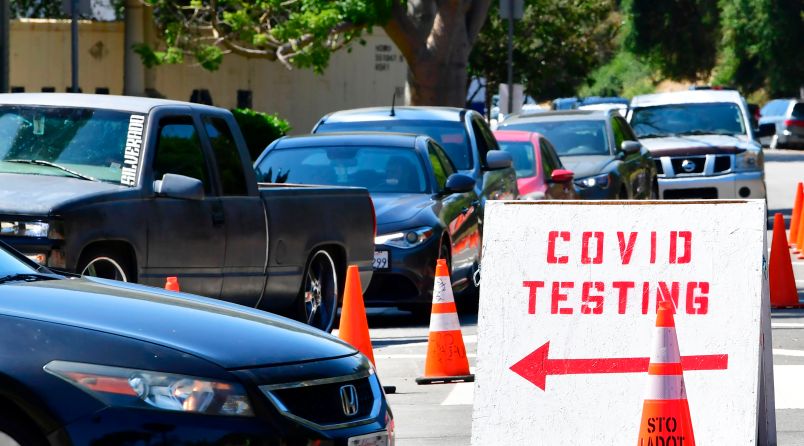For weeks, COVID-19 testing in the United States has been complicated for many by a single factor: the time it takes to get a result.
Though the sample collection aspect of testing is widely available, it can take up to two weeks in some cases for people to learn the results of their test if it’s being processed by the nation’s commercial laboratories. That delay has led some to ask what the purpose of testing is at all, if the results aren’t available in time for patients to make decisions about whether or not to quarantine.
But Health and Human Services Assistant Secretary for Health Brett Giroir told reporters on Thursday that concerns over the issue were exaggerated, and that such cases were likely to be “outliers.”
Half of the country’s testing is done in hospitals with in-house laboratories or using relatively instantaneous point-of-care tests, Giroir said. He went on to argue that criticism saying that some testing takes between 10 and 14 days is inaccurate.
“The thought of it being routinely 10 to 14 days is just not true, and I think it sends a bad public health message that goes against the goals we all have,” Giroir said.
Rapid point of care tests remain broadly unavailable to the general public, though Giroir discussed an initiative by which HHS is supplying nursing homes with the testing equipment.
Tests that have gone through commercial labs — by which the samples are sent to centralized facilities for the results — have encountered bottlenecks since mid-June, as the laboratories struggle to accommodate tens of thousands of test requests each day.
That problem led Dr. Anthony Fauci to suggest “pooling” tests — meaning that groups of samples would be tested together. If a positive COVID-19 test emerged, only then would the samples be tested individually.
Giroir added that last week, 45 percent of commercial labs completed tests within three days, and that over the past week, the rate of tests completed within three days was up to 56 percent.
It’s not clear how long it took to test the other half of samples.
“Testing will not control an outbreak when you have 70k new infections a day, what will control the outbreak is personal responsibility,” he added.



